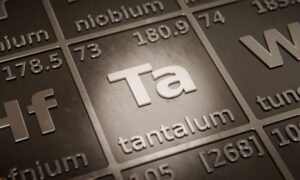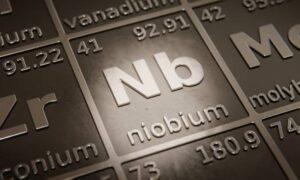Technology for extracting tantalum and niobium from metallurgical waste


Tantalum
is a rare metal, accounting for 0.0002% of the earth’s crust.In minerals, tantalum is always found together with niobium due to the similarity of their physical and chemical properties.Tantalum is a typically dispersed element, isomorphic with many chemical elements.
Tantalum has one of the highest melting points of all elements on Earth.Its melting point is approximately 2996 °C, which is second only to tungsten and rhenium.
Chemically pure tantalum is exceptionally resistant to the action of liquid alkali metals, most inorganic and organic acids, and many other aggressive environments (except molten alkalis).
In terms of chemical resistance to reagents, tantalum is similar to glass.
Niobium
is a ductile refractory transition metal whose physical properties depend on temperature values.
One can note such properties of niobium as high melting and boiling points, lower electron work function compared to other refractory metals – tungsten and molybdenum. The latter property characterizes the ability to electron emission (emission of electrons), which is used for the application of niobium in vacuum tube technology. Niobium also has a high transition temperature to the superconductivity state.
The corrosion resistance of niobium in acids and other environments in combination with high thermal conductivity and plasticity make it a valuable structural material for equipment in chemical and metallurgical industries. Niobium has a combination of properties that meet the requirements of nuclear power engineering for structural materials.
APPLICATION
- Aircraft parts
- Casings for uranium and plutonium fuel elements
- Containers and pipes for liquid metals
- Parts for electrolytic capacitors
- Cryotrons – superconducting elements installed in computing equipment
- “Hot” fittings for radar installations
- Powerful generator tubes
- Heat-resistant and corrosion-resistant alloys
- Corrosion-resistant equipment for the chemical industry
- Alloying additives to steel
- Catalysts in organic synthesis
PRODUCTION
The main raw materials for the production of tantalum, niobium and their alloys are tantalite and loparite concentrates containing about 8% Ta2O5, as well as 60% or more Nb2O5.
The concentrates are decomposed by acids or alkalis, loparite concentrates are chlorinated. The separation of Ta and Nb is carried out using extraction.
Metallic tantalum is usually obtained by reducing Ta2O5 with carbon or electrochemically from melts.
Compact metal is produced by vacuum arc, plasma melting or powder metallurgy.
To obtain 1 ton of tantalum-niobium concentrate, it is necessary to process up to 3,000 tons of ore.
JSC “Titanium Institute” has a technology for extracting tantalum and niobium from chloride waste of titanium-magnesium production.
A process regulation has been developed for the design of a pilot industrial production facility for processing titanium-magnesium production waste with the extraction of valuable components, which provides for the production of tantalum-niobium concentrate with a content of tantalum and niobium pentoxides of at least 60%.
The technology of metallothermic production of niobium has been tested on a laboratory scale. Ingots of rough niobium have been obtained.

Get a free consultation and presentation of our technologies!
Fill out the form and our experts will contact you to discuss the details, answer your questions, and offer the best solutions for your business. In the “Message text” field, briefly write what you are interested in.